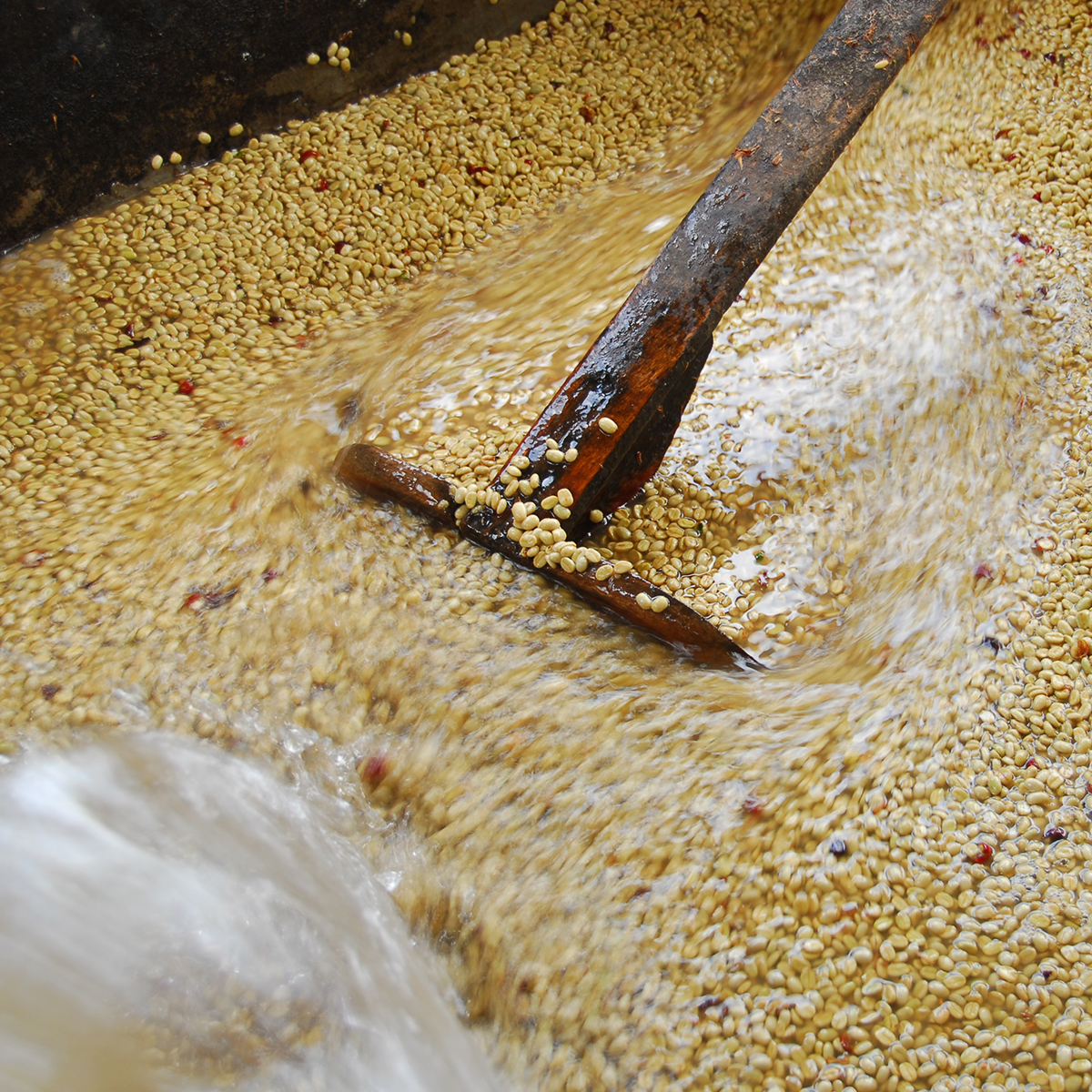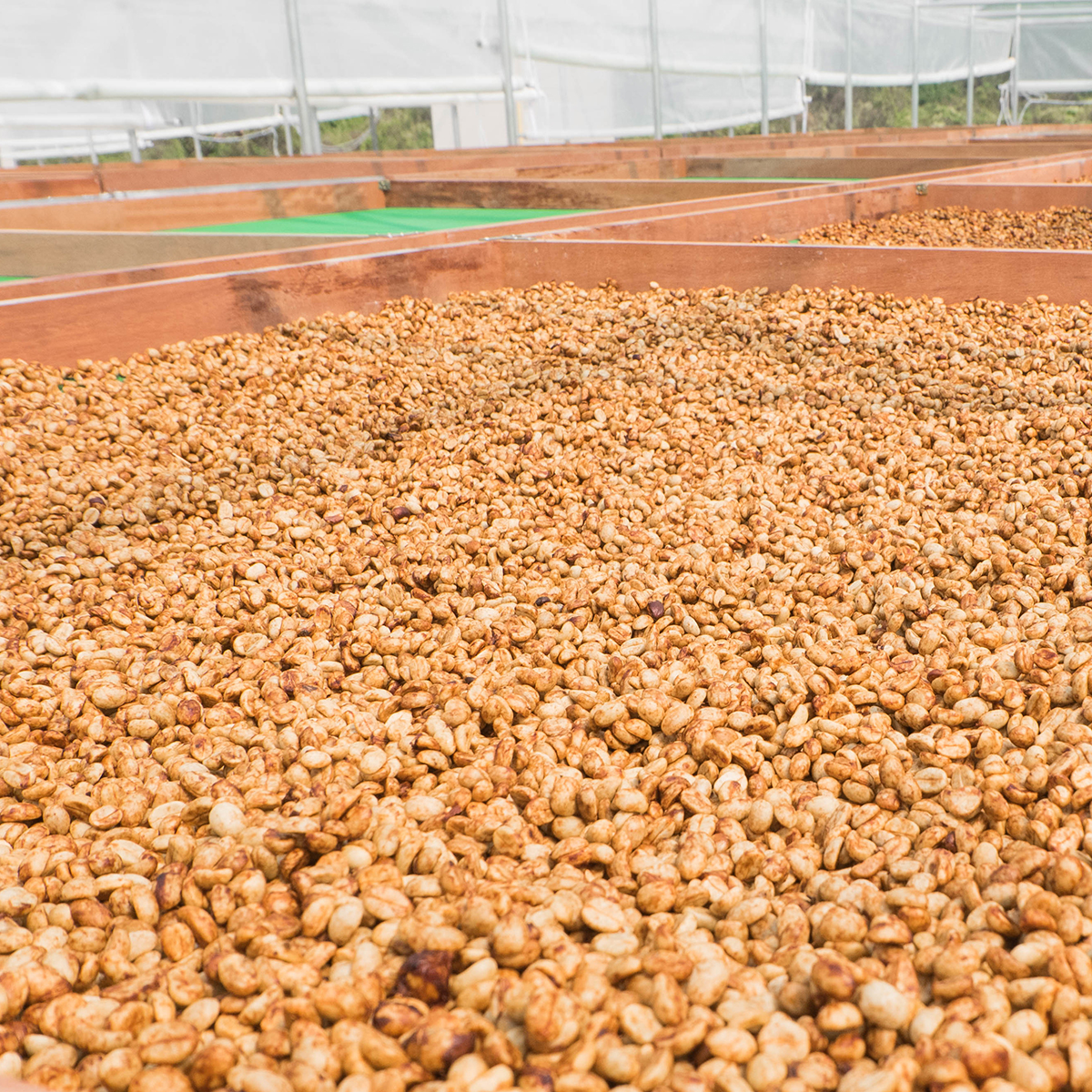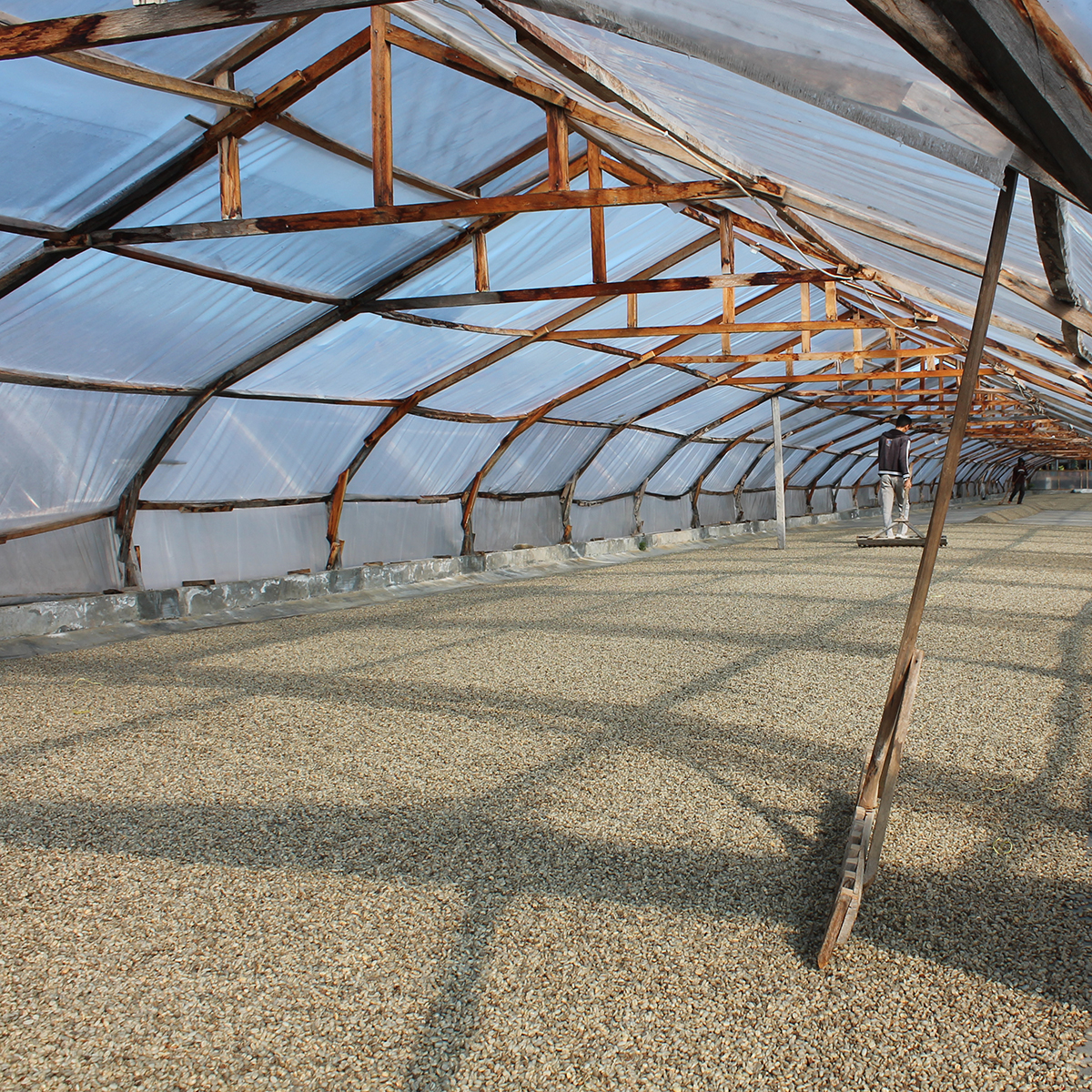Washed Processing
varied flavor notes from fruity to silky
The coffee cherry is mechanically depulped and placed in fermentation tanks for 12 - 72 hours at a wet mill, then rinsed and dried. This is the most common processing method and many of our coffees are processed this way.

Natural Processing
deep, fruity flavor notes
This is the original processing method. Coffee cherries are placed on raised drying beds to slowly dry in sun, allowing the coffee seeds to absorb fruit flavors and sugars from skin and mucilage. Once sufficiently dried the fruit and parchment are removed at a dry mill. This method is used in arid environments, mainly Ethiopia and Brazil.

Honey Processing
silky, honey with light fruit favor notes
During this process only the skin and pulp are removed. Some or all of the mucilage remain on the parchment as the coffee cherries dry on patios or beds for various periods of time. “Honey” refers to the coffee cherry mucilage because it is sticky. There are 3 different types of honey processed coffees: Yellow, Red and Black, with Black taking the longest amount of time to dry.

Wet Hulled Processing
earthy flavor notes
Giling Basah – translated as wethulled – is a processing method predominantly used in Indonesia. The hull and husk are removed at a greater moisture level and it requires a special machine strong enough to handle this type of processing. This method is utilized in very humid environments. Wet hulled beans have a bluish tint.

Curious how different processing methods affect coffee flavors? Try coffees from all four methods. Go to https://gimmecoffee.com/coffee/


